Royreynosa
On this page, you find all documents, package deals, and flashcards offered by seller royreynosa.
- 6
- 0
- 0
Community
- Followers
- Following
6 items
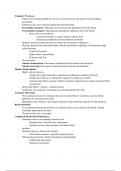
Class notes BIOL 2302: Transport processes of Nutrients and electrolytes through the kidney and blood
The transport processes for tubular resorption and its characteristics along with renal threshold. The resorption of nutrients, sodium, potassium, water, calcium, and phosphate. The importance of vasopressin, bicarbonate, and hydrogen for blood and urine pH. Describing the processes of nitrogenous waste. drugs, and bioactive substances. How the nephron establishes and maintains an osmotic gradient. The evaluation of the kidney via renal plasma clearance and the characteristics of urine.
- Class notes
- • 6 pages •
The transport processes for tubular resorption and its characteristics along with renal threshold. The resorption of nutrients, sodium, potassium, water, calcium, and phosphate. The importance of vasopressin, bicarbonate, and hydrogen for blood and urine pH. Describing the processes of nitrogenous waste. drugs, and bioactive substances. How the nephron establishes and maintains an osmotic gradient. The evaluation of the kidney via renal plasma clearance and the characteristics of urine.
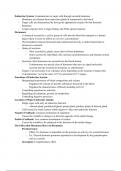
Class notes BIOL 2302: Endocrine System
The endocrine system physiology includes hormones involved and how they are transported in the blood. Also, the effect that hormones have on other hormones is through permissiveness, synergism, and antagonism. the hormone classifications, chemical classes, and solubility along with the stimulation of hormone synthesis and release. Including how the hormone activity is dependent on its concentration. Response time to hydrophilic and lipophilic hormones.
- Class notes
- • 6 pages •
The endocrine system physiology includes hormones involved and how they are transported in the blood. Also, the effect that hormones have on other hormones is through permissiveness, synergism, and antagonism. the hormone classifications, chemical classes, and solubility along with the stimulation of hormone synthesis and release. Including how the hormone activity is dependent on its concentration. Response time to hydrophilic and lipophilic hormones.
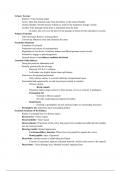
Urinary Tract
Key points of the urinary system in the anatomy and physiology. Including hormones produced for the regulation of fluid. Including reflexes such as micturition and the storage reflex. Female vs. Male urethra.
- Class notes
- • 6 pages •
Key points of the urinary system in the anatomy and physiology. Including hormones produced for the regulation of fluid. Including reflexes such as micturition and the storage reflex. Female vs. Male urethra.
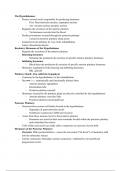
Class notes BIOL 2302: Hormone Glands
The main points of most hormones of the body and the functions and how regulations occur. such as insulin, glucagon, sex, cortisol, aldosterone, calcitonin, calcitriol, parathyroid and thyroid, growth, and pituitary hormones and the distinctive glands Where the hypothalamus s responsible for most.
- Class notes
- • 8 pages •
The main points of most hormones of the body and the functions and how regulations occur. such as insulin, glucagon, sex, cortisol, aldosterone, calcitonin, calcitriol, parathyroid and thyroid, growth, and pituitary hormones and the distinctive glands Where the hypothalamus s responsible for most.
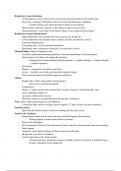
Class notes BIOL 2302 Respiratory system
An insight into the respiratory system includes inhaling through the nose and the organs working together, as well as the functions such as the pharynx, oropharynx, and trachea, and down to the lungs and its components. Also the process of preparation through lung inflation, pulmonary ventilation, inspiration, and expiration.
- Class notes
- • 7 pages •
An insight into the respiratory system includes inhaling through the nose and the organs working together, as well as the functions such as the pharynx, oropharynx, and trachea, and down to the lungs and its components. Also the process of preparation through lung inflation, pulmonary ventilation, inspiration, and expiration.
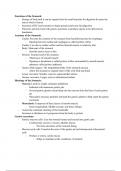
Stomach Anatomy and physiology
The anatomy and physiology of the stomach including the small and large intestine. It also includes the organs of the pancreas and the liver. Describing the histology of the stomach such as the mucosa. And includes the gastric regulation phases: cephalic, gastric, and intestinal phases
- Class notes
- • 9 pages •
The anatomy and physiology of the stomach including the small and large intestine. It also includes the organs of the pancreas and the liver. Describing the histology of the stomach such as the mucosa. And includes the gastric regulation phases: cephalic, gastric, and intestinal phases
